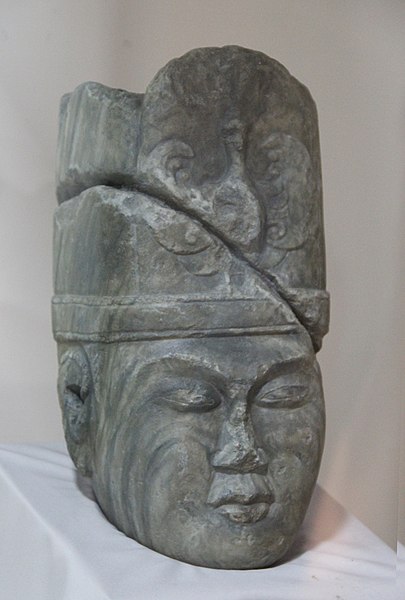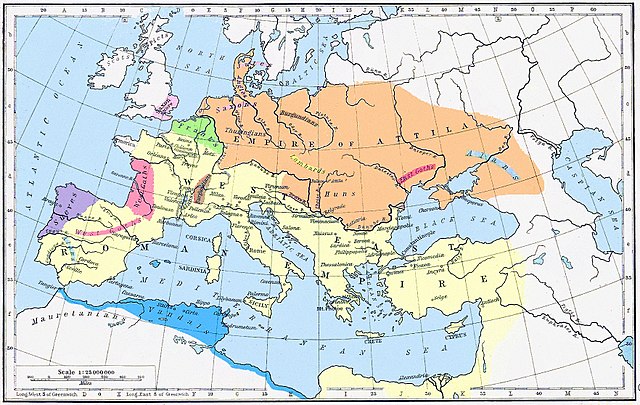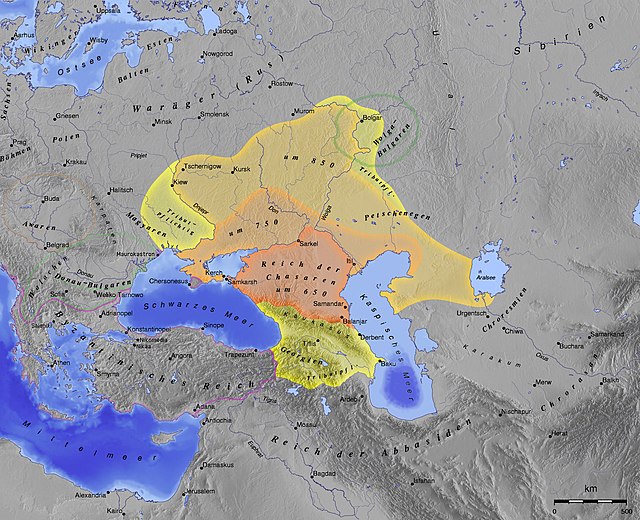The Second Turkic Khaganate was a khaganate in Central and Eastern Asia founded by Ashina clan of the Göktürks that lasted between 682–744. It was preceded by the Eastern Turkic Khaganate (552–630) and the early Tang dynasty period (630–682). The Second Khaganate was centered on Ötüken in the upper reaches of the Orkhon River. It was succeeded by its subject Toquz Oghuz confederation, which became the Uyghur Khaganate.
Bust of Kul Tigin (AD 684–731), prince of the Second Turkic Khaganate, found in Khashaat, Arkhangai Province, Orkhon River valley. Located in the National Museum of Mongolia.
Gold diadem of Bilge Khagan from the burial site at Khoshoo Tsaidam.
Turk soldier in armour, Shorchuk, Xinjiang, 8th century CE.
Silver Deer of Bilge Khan from the burial site at Khoshoo Tsaidam.
A khanate or khaganate is a type of historic polity ruled by a khan, khagan, khatun, or khanum. Khanates were typically nomadic Turkic, Mongol and Tatar societies located on the Eurasian Steppe, politically equivalent in status to kinship-based chiefdoms and feudal monarchies. Khanates and khaganates were organised tribally, where leaders gained power on the support and loyalty of their warrior subjects, gaining tribute from subordinates as realm funding. In comparison to a khanate, a khaganate, the realm of a khagan, was a large nomadic state maintaining subjugation over numerous smaller khanates. The title of khagan, translating as "Khan of the Khans", roughly corresponds in status to that of an emperor.
Hunnic Empire of Attila in c. 450 CE
Khazar Khaganate, 650–850 CE
Tamgha of the Bulgar Turkic Dulo clan which ruled the First Bulgarian Empire







